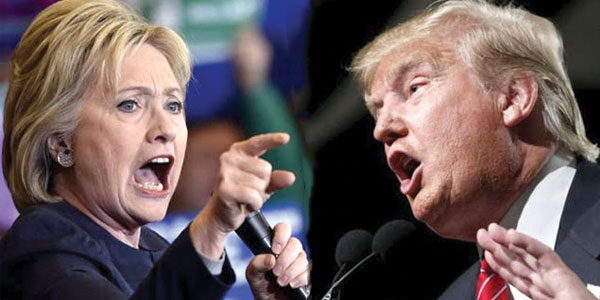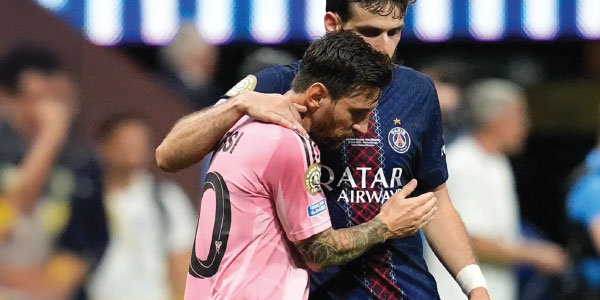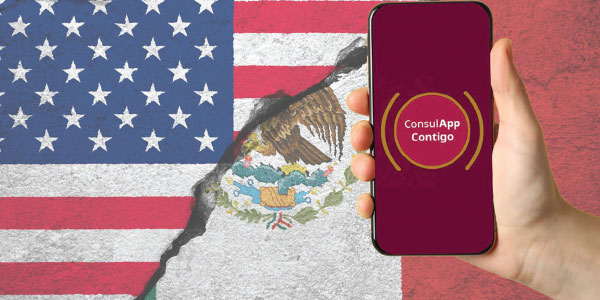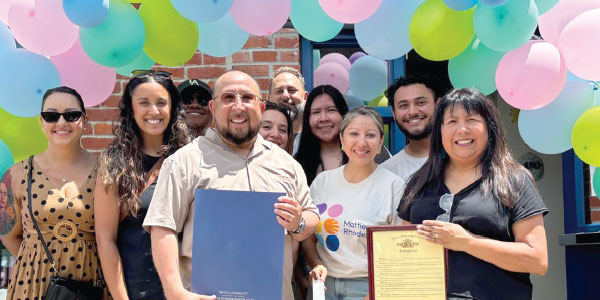
El odio anda suelto en Estados Unidos. Lo que antes sólo se pensaba a solas en una recámara o se decía en secreto en la cocina, de pronto, se escucha en la televisión, se lee en las redes sociales y se grita en las campañas por la presidencia. El odio se ha convertido en lo normal.
Ese odio será amplificado en las convenciones de los partidos políticos — primero la Republicana en Cleveland, y luego la Demócrata en Filadelfia — y entraremos al caluroso agosto con un país dividido. Este ya es, por definición, un verano de odio. Y el otoño no pinta mucho mejor.
El principal factor de odio en este país tiene nombre y apellido: Donald Trump. Él permitió que los prejuicios raciales más íntimos — esos que nunca se mencionaban en público — se convirtieran en el mensaje central de su lucha por la presidencia. Así acusó injustificadamente a los inmigrantes mexicanos de ser criminales y violadores, propuso prohibirle la entrada a 1,600 millones de musulmanes, se burló de un periodista con una discapacidad física y de un veterano de guerra como el senador John McCain, y ha rehusado disculparse por llamarles “cerdos” y “perros” a las mujeres.
Trump es un “hater.” Nunca en mi vida he oído hablar así a un político norteamericano. Y muchos de sus seguidores creen que si un candidato insulta y agrede, ellos también pueden hacer lo mismo. El resultado es un preocupante ambiente donde los ataques, la vulgaridad y el racismo se han vuelto la norma.
Pero Trump no es el único factor de odio. Las muertes este mes de dos afroamericanos — uno en Minnesota y otro en Luisiana — a manos de policías blancos (y sin aparente razón) destacan una triste realidad: Mientras más oscuro sea el color de tu piel, hay más probabilidades de que seas víctima de abuso policial en Estados Unidos.
El gran cambio está en que, por primera vez, estamos viendo cómo opera el odio racial. Es la tecnología al servicio de la justicia. Después que la policía de St. Paul, Minnesota, disparó contra el conductor afroamericano, Philando Castile, su novia empezó a transmitir todo a través de Facebook Live. Miles de personas observaron en vivo mientras la vida de Castile desaparecía tras un incidente que empezó cuando él fue detenido por tener rota una luz trasera.
Lo mismo ocurrió a las afueras de una tienda de Baton Rouge, Luisiana. Un testigo filmó con su celular el momento en que dos policías tiraron al suelo al afroamericano Alton Sterling, y luego captó cuando uno de ellos le disparó en el pecho. La indignación es mucho mayor cuando se ve una injusticia que cuando te la cuentan.
Sin embargo, la animosidad racial también puede conducir a los ataques específicos en contra de blancos, como quedó demostrado por los recientes asesinatos de cinco oficiales de policía en Dallas y tres oficiales en Baton Rouge a manos de dos hombres afroamericanos. (Uno de los oficiales en Baton Rouge era afroamericano.)
Además, las cifras muestran a una nación que se está quedando sin puentes y sin comunicación entre las autoridades y la ciudadanía que debería proteger. El 69 por ciento de los estadounidenses cree que las relaciones raciales están en su peor momento desde 1992, según una encuesta del New York Times.
Ante la matanza de agentes policiales de Dallas y la constante muerte de afroamericanos a manos de policías, el presidente Obama — el primer afroamericano en la Casa Blanca — no le ha quedado más remedio que reconocer lo obvio: “Me parece justo decir que veremos más tensión en la policía — entre la policía y comunidades este mes, el próximo mes, el siguiente año, durante bastante tiempo,” dijo, en conferencia de prensa previamente en el mes.
Cuando le pregunté en el 2014 al director, Spike Lee, si Estados Unidos había entrado en una época post-racial – donde el color de piel ya no importaba — tras la elección de Obama, me dijo “that’s bull—-.” Y esto no necesita traducción.
Me temo que este verano de odio se va a extender hasta las elecciones del martes 8 de noviembre. No veo ninguna indicación de que los ataques étnicos y raciales vayan a desaparecer. Al contrario; conforme se acerque el día de votación, pudieran aumentar en intensidad.
Pero quisiera creer que, por el factor Trump, se trata tan solo de un triste paréntesis en la historia moderna de Estados Unidos y que, para principios del 2017, el civismo y la racionalidad volverán a dominar. Aunque, claro, si gana Trump habrá que tirar esta teoría por la ventana.
The Summer of Hate
Hate has become the new normal in America. We naively thought that by now prejudice and bigoted rhetoric would be relegated to the margins of society — private thoughts or whispers. Suddenly, however, racist statements are shouted out on television, in social media and along the campaign trail.
We’re going through a long hot summer as a deeply divided country — and the autumn doesn’t look like it will offer much relief. In fact, all the hateful rhetoric that we’ve been hearing lately is likely to be amplified by the national political conventions — the Republicans’ now underway in Cleveland, then the Democrats’ in Philadelphia.
The primary driving force of this hate wave has a name and an all-too-present face: Donald Trump. For more than a year, he has put hatred and divisiveness up front in his presidential campaign. We know the facts: Trump has labeled Mexican immigrants as rapists and criminals and suggested banning Muslims from entering the country. He has mocked a reporter with a disability, belittled Sen. John McCain’s years as a prisoner of war and refused to apologize for making blatantly sexist comments about women.
Trump is a hater. I’ve never witnessed such venom in American politics as in his campaign. Undoubtedly many of his followers believe that if their candidate can attack people, they can too. The result is a poisonous political climate where insults, bullying and racism have become commonplace.
But Trump is hardly the sole source of all this divisiveness. He reflects undercurrents that have resurfaced with a vengeance this summer. This month alone, two African-Americans — Philando Castile in Minnesota and Alton B. Sterling in Louisiana — have been killed at the hands of white police officers. Their deaths highlight a sad, long-held suspicion in this country that the darker the color of your skin, the more likely you are to be a victim of police brutality.
What’s new is that modern technology allows us to witness injustice in real time. When Philando Castile was shot in a suburb of St. Paul, Minnesota, his girlfriend broadcast the aftermath on Facebook Live. Thousands of people watched live as Castile’s life slipped away after an incident that began when he was pulled over for having a broken taillight. In Baton Rouge, Louisiana, a witness recorded the moment that two white police officers knocked down Alton Sterling. Shortly after, one officer shot Sterling in the chest, and viewers were able to watch the whole thing.
But racial animosity can also lead to the targeting of whites, as demonstrated by the recent killings of five police officers in Dallas and three officers in Baton Rouge at the hands of two African-American men. (One of the officers in Baton Rouge was African-American.)
Sadly, communication between authorities and the citizens that they are supposed to protect is suffering. According to a New York Times poll, 69% of Americans say that racial relations are at their worst since 1992, when riots were sparked after the police beating of Rodney King.
After the shooting deaths of the officers in Dallas, President Obama, the nation’s first African-American commander in chief, had no choice but to admit the obvious: “I think it is fair to say that we will see more tension in police — between police and communities this month, next month, next year, for quite some time,” he said at a news conference earlier this month.
In 2014, I sat down with director Spike Lee and asked him if Obama’s election had truly ushered in a post-racial era in the United States, and if the color of someone’s skin no longer mattered, as some commentators were claiming at the time. Lee’s answer: “That’s bull—-,” which is self-explanatory.
No, we’re not living in a post-racial era, and I’m afraid that our summer of hate will linger at least until Election Day in November. I don’t see any indication that divisive attacks will decrease — on the contrary, as the election approaches, they might intensify.
However, I’d like to believe that because of the Trump factor, this era might go down in American history as a deeply tragic footnote. I’d also like to believe that by early 2017, civility and rationality will prevail in America once again. Of course, if Trump wins, that theory will go right out the window.
(Jorge Ramos, an Emmy Award-winning journalist, is a news anchor on Univision and the host of “America With Jorge Ramos” on Fusion. Originally from Mexico and now based in Florida, Ramos is the author of several best-selling books. His latest is “Take a Stand: Lessons From Rebels.” Email him at jorge.ramos@nytimes.com.)










